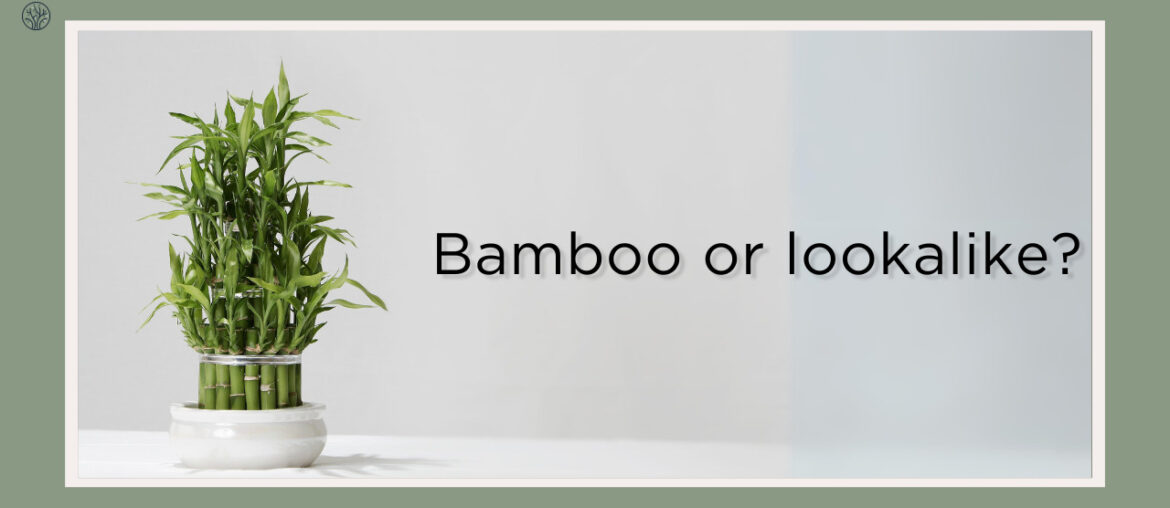Let’s go on with our journey through the world of plants that look like other plants. We have seen some interesting cases of trees that look like weeds, based on their leaf shapes. But today, we have a different topic for you. Today, we are going to introduce you to some plants that look like bamboo, not only in their leaves but also in their stems and even their way of growing.
Key takeaways
- Bamboo is a fast-growing, versatile member of the grass family, known for its tall, slender stems and lush foliage.
- Key characteristics include rapid growth rate, height (ranging from a few feet to over 100 feet), clumping or running growth habits, and resilience to various environmental conditions.
- Lucky Bamboo, Bamboo Palm, and Parlor Palm are some of the few trees that look like bamboo with their upright stems and thin green leaves.
- These plants are versatile and beautiful and they can brighten up any space with their green and elegant look.
Lucky Bamboo (Dracaena Sanderiana)
- Key takeaways
- Lucky Bamboo (Dracaena Sanderiana)
- Bamboo Palm (Chamaedorea seifrizii & Rhapis Excelsa)
- Parlor Palm (Chamaedorea elegans)
- Giant Reed (Arundo Donax) & Giant Cane Grass
- Japanese Knotweed (Reynoutria Japonica)
- Heavenly Bamboo (Nandina)
- Horsetail (Equisetum)
- Buddha Bamboo (Bambusa ventricosa)
- Key Characteristics of Bamboo Plants
- FAQs
Lucky Bamboo, the one in our thumbnail image, despite its misleading name, is not bamboo. This houseplant, which is really called Dracaena Sanderiana, is from the Asparagaceae family. It looks like bamboo because of its straight, upright stems and green leaves, which have led to its common name and widespread confusion about the origin of the tree.
Lucky Bamboo is popular not only for its bamboo-like look but also for its meaning in Feng Shui and as a sign of good luck and wealth. It’s common to see it in homes and offices, where people like it for how it looks and how easy to grow and take care of it.
This fact answers the question in the thumbnail: “Is Lucky Bamboo a bamboo or just a lookalike?” Clearly, it’s the latter, but this doesn’t diminish its charm and the nice and relaxing atmosphere it brings to indoor spaces.
Bamboo Palm (Chamaedorea seifrizii & Rhapis Excelsa)
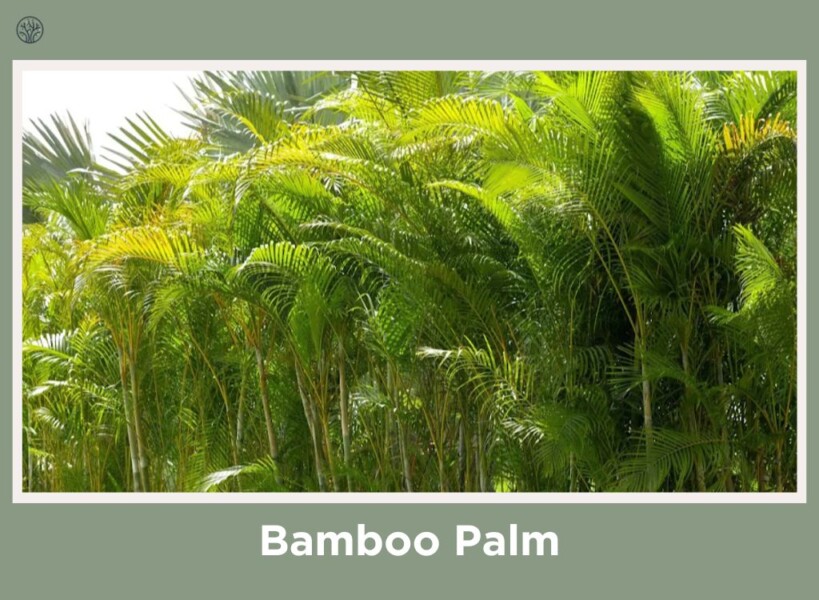
Bamboo Palm is a common name for several species of palms that resemble bamboo, such as Chamaedorea seifrizii and Rhapis Excelsa. These plants have thin, graceful stems and delicate, feathery leaves that create a tropical and peaceful atmosphere.
The Reed Palm, or Chamaedorea seifrizii, is especially known for its ability to clean the air, making it a healthy choice for indoor spaces. The Lady Palm, or Rhapis Excelsa, has wider, fan-shaped leaves and a sturdy growth habit. Both types of palms need moderate light and well-drained soil, and they are very effective in purifying the air, making them not only beautiful but also beneficial for indoor environments.
Parlor Palm (Chamaedorea elegans)
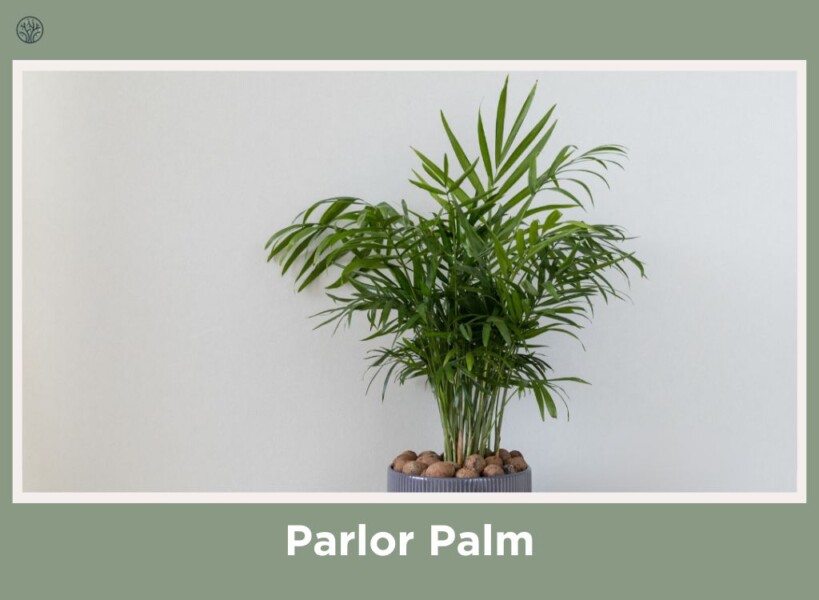
The Parlor Palm, or Chamaedorea elegans, is a lovely and popular houseplant that has a compact size and a bamboo-like look. This palm has thin, green stems and soft, feathery leaves. It’s a plant that gives a feeling of elegance and refinement, making it ideal for decorating living spaces.
The Parlor Palm is very adaptable, growing well in low light and needing little care, which makes it suitable for both beginners and experts in plant care. Its durability and graceful shape have made it a classic choice in the world of interior plant design.
Giant Reed (Arundo Donax) & Giant Cane Grass
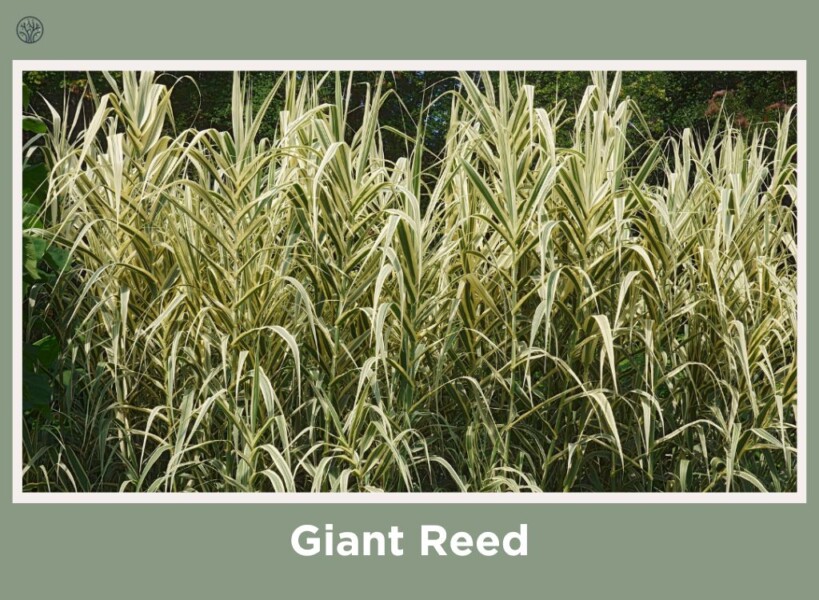
The Giant Reed, or Arundo Donax, is a majestic and robust plant that looks like bamboo because of its towering height and cane-like stems. This plant is a type of perennial grass that comes from the Mediterranean region, and it can grow very tall, making it stand out in any landscape. Its bamboo-like appearance is complemented by large, feathery plumes that add a touch of elegance. However, it’s important to know that the Giant Reed is also an invasive plant, especially in places near rivers, where it can take over and change ecosystems.
Similarly, Giant Cane Grass, a close relative, also has these bamboo-like features, with tall, strong stems and a fast growth rate, making it a good choice for making natural fences or wind barriers in large spaces.
Japanese Knotweed (Reynoutria Japonica)
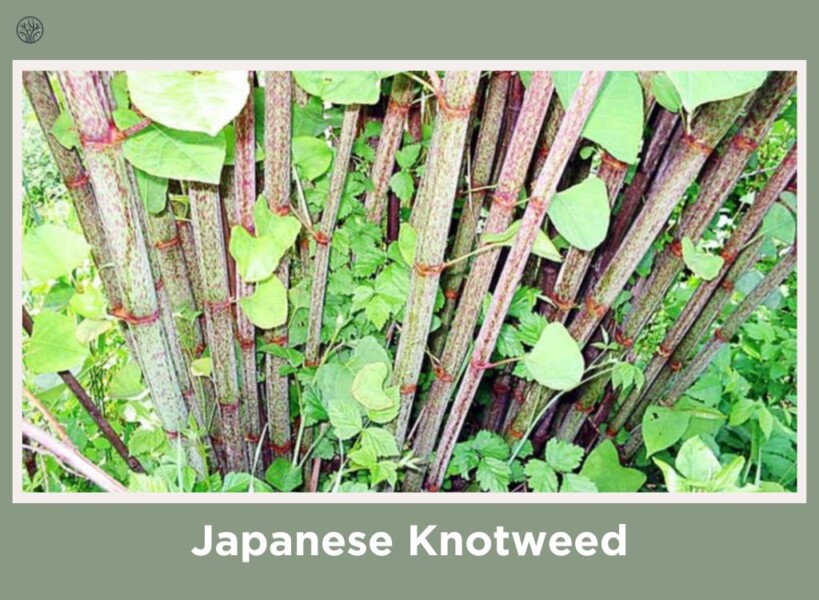
Japanese Knotweed, or Reynoutria Japonica, is a plant that attracts attention because of its bamboo-like stems and fast growth. Originating from East Asia, this plant has become widespread across various continents. It has hollow stems that look like bamboo, and it can grow very high in a short time, making it one of the plants that look the most like bamboo.
But, like the Giant Reed, Japanese Knotweed is also an invasive plant, often making it hard to manage and control. It is very strong and adaptable, which is impressive, but it also needs careful and responsible planting to avoid harming the environment.
Heavenly Bamboo (Nandina)
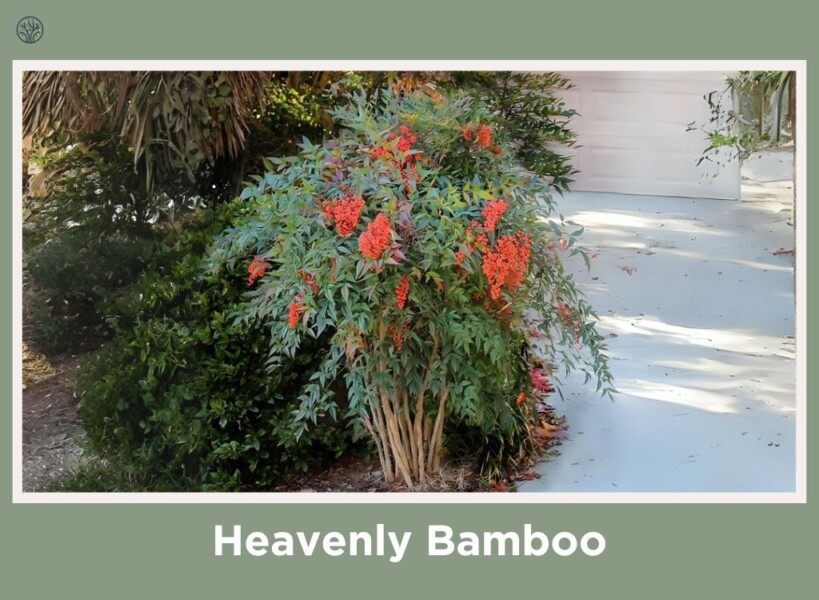
Nandina, also known as Heavenly Bamboo, is a plant that looks like a mix of bamboo and shrub. Despite its name, Nandina is not a real bamboo but rather a member of the Berberidaceae family.
It has thin, bamboo-like leaves and bright red berries that make it colorful and attractive to any garden or indoor setting. Nandina’s leaves change colors with the seasons, going from green in spring to red and purple in fall and winter, giving a beautiful show all year long. This plant is not only pretty but also easy to grow, as it can live in different kinds of soil and light, making it a great choice for gardeners and interior designers.
Horsetail (Equisetum)
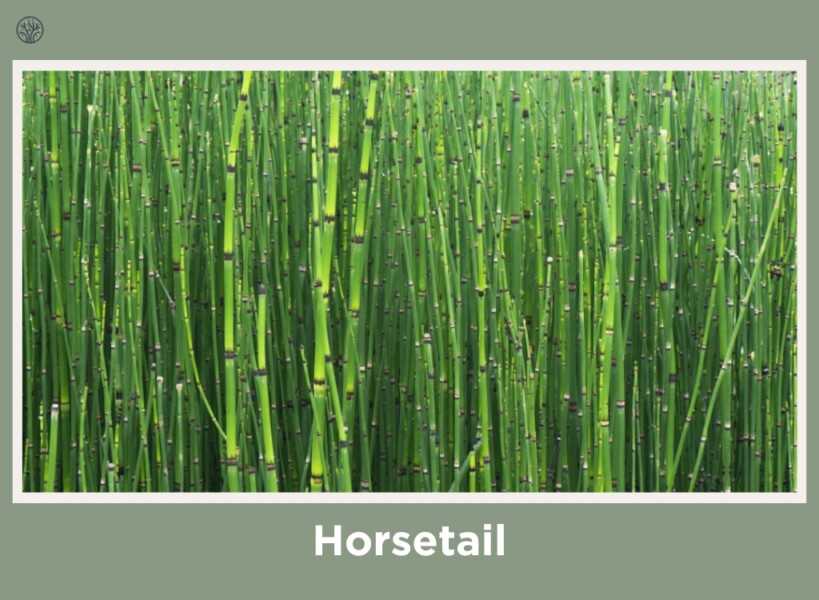
Horsetail, or Equisetum, is a unique and ancient plant that looks like tiny bamboo. This plant has thin, jointed stems and a rough, brush-like texture, which gives it a distinctively prehistoric appearance.
Horsetail is a versatile plant, that can grow in different places, as long as the soil is wet and sandy, and it is often near water. Its growth pattern is quite fascinating, with the ability to spread quickly and form dense mats. Horsetail is not only pretty but also useful, as people have used it in old medicine and as a natural scrubber because it has a lot of silica in it. =
Buddha Bamboo (Bambusa ventricosa)
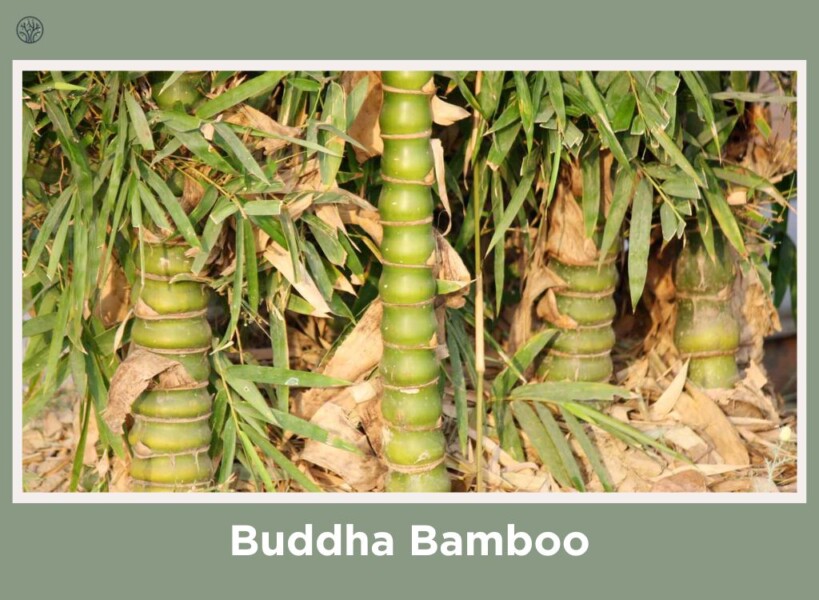
Buddha Bamboo, or Bambusa ventricosa, is a beautiful kind of bamboo that has a special and decorative look. Unlike the Pink Bodhi Tree which is named after its spiritual significance, as it symbolizes enlightenment and wisdom. Its name comes from its peculiar shape, which has round and swollen sections along the stems that look like the belly of Buddha. This distinctive feature sets it apart from other bamboo species and adds an intriguing aesthetic element.
Buddha Bamboo usually grows to a medium height, so it is good for smaller gardens or as a plant in a pot. It has a lot of green leaves and grows close together, making a thick, green cover, which makes any place look fresh and green. This bamboo is not hard to take care of, as it likes soil that drains well and needs water sometimes. It likes a place that is sunny or partly shady, where it can get enough light but not too much sun for too long.
Key Characteristics of Bamboo Plants
Bamboo is a kind of grass that belongs to the Poaceae family, and it is famous for its special way of growing and its amazing height. Let’s explore these features to understand why bamboo is such a special and desirable plant.
Growth Habit And Height
Bamboo plants have exceptional growth rate and height. Some species can grow up to 150 feet, with certain varieties known to grow over a foot per day under optimal conditions. This is even faster than the fastest-growing hardwood tree!
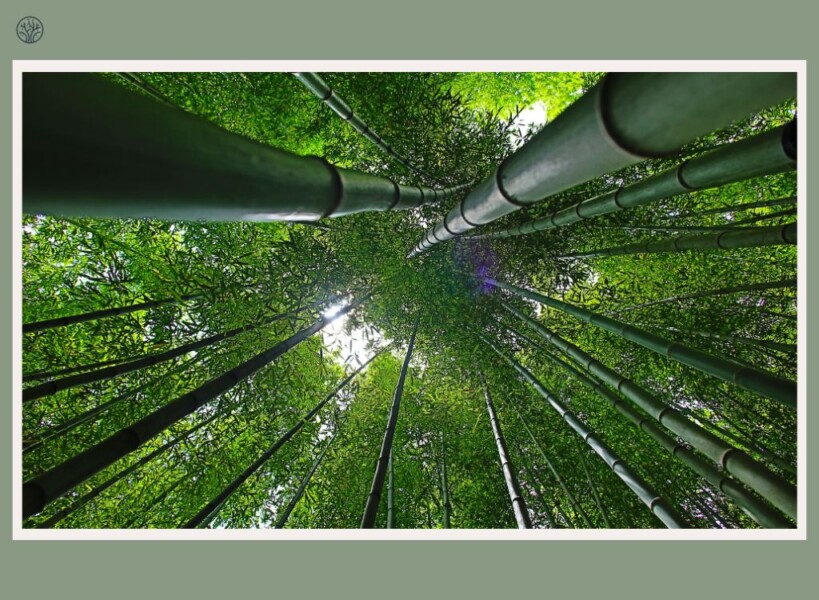
There are two main kinds of bamboo: clumping and running.
- Clumping bamboo grows slowly and stays close together, making it more manageable and suitable for smaller spaces.
- Running bamboo, on the other hand, spreads aggressively, requiring more space and often containment measures to control its spread.
The height of bamboo plants can be very different. Some kinds are very short and only grow a few feet high, while some kinds are very tall and can grow over 150 feet. This means that bamboo can be used for many different things, from covering the ground to making big trees.
Bamboo’s speed of growing is also very amazing. Some kinds are among the fastest-growing plants in the world. Under optimal conditions, some kinds of bamboo can grow several feet in one day. This fast-growing is not only fascinating but also makes bamboo a sustainable and renewable resource, popular in eco-friendly construction and manufacturing.
Leaf Shape, Size, And Color
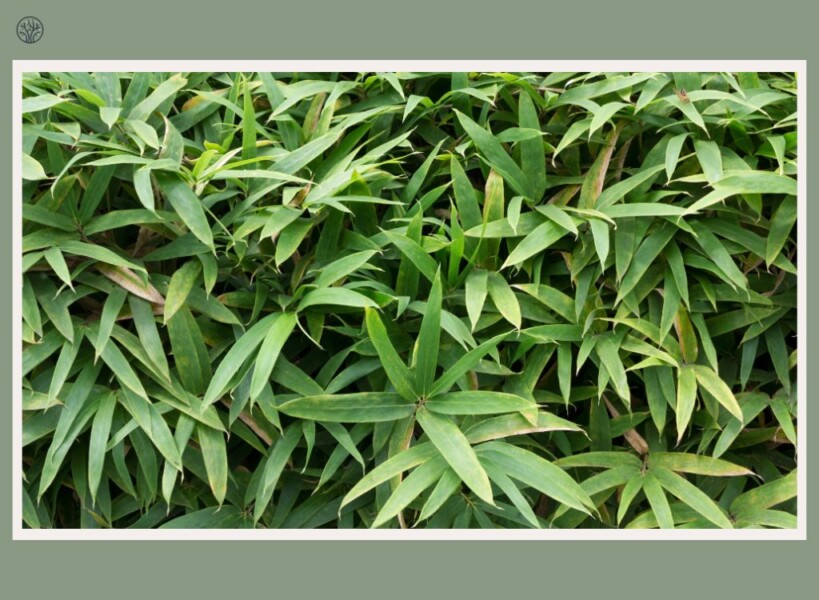
Bamboo leaves are usually long and thin, making a green and leafy cover. The leaves can be very different in size, depending on the kind of bamboo. Some have big, wide leaves, while others have small, fine leaves. The color of bamboo leaves can also be different, from dark green to mixed colors, like yellow or cream stripes, making the plant more beautiful.
Soil Requirements And Plant Spacing
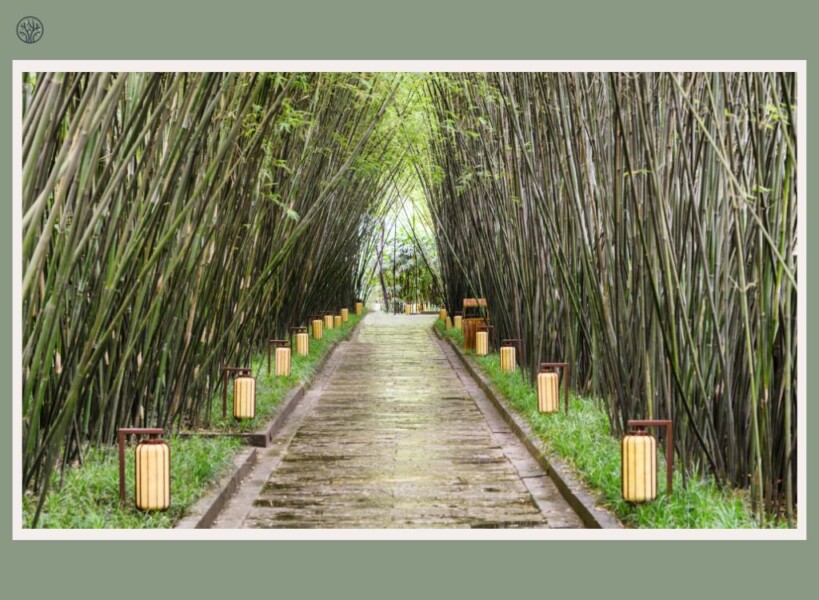
Bamboo is adaptable to a variety of soil conditions, but certain factors can significantly enhance its growth and overall health.
Soil Requirements: Bamboo prefers well-drained soil. While it can tolerate different kinds of soil, from sandy to loamy, the best soil for bamboo is rich in organic matter and retains moisture without becoming waterlogged. The pH level of the soil is also important. Bamboo usually likes soil that is a little acidic to neutral, from about 6.0 to 7.0. Making sure the soil drains well is very important because bamboo does not like too much water, which can make its roots rot and cause other problems.
Plant Spacing: How much space you need to give each bamboo plant depends on the kind of bamboo and how it grows. For clumping bamboo, you can plant them closer together, because their growth is more upright and contained. A good rule is to plant clumping bamboo plants about 3 to 5 feet apart. For running bamboo, you need more space because it spreads more. You may need to give them 5 to 10 feet or more of space, depending on how big and fast they grow. For running bamboo, you may also need to use barriers or other ways to stop them from growing where you do not want them to.
Proper soil preparation and thoughtful spacing are key to successfully growing bamboo. These factors contribute to the plant’s health, impact its growth rate, and influence the overall appearance of the bamboo in the landscape. By providing the right soil and space, you can enjoy the beauty and benefits of these amazing plants.
Pest And Diseases Affecting Bamboo
While bamboo is relatively resistant to pests and diseases, it is not immune. Common pests include bamboo mites, aphids, and mealybugs, which can be controlled through regular maintenance and, if necessary, the use of insecticides. Diseases such as bamboo blight and rust can also affect bamboo, usually leading to discolored leaves or spots. You can prevent these problems by giving the bamboo enough space, and water, and cleaning the dead leaves and stems.
FAQs
What are the reeds that look like bamboo?
Some reeds look like bamboo because they have tall, strong stems and grow fast like bamboo. But they are not the same as bamboo, because they come from different plant families and can grow where they are not wanted in some places.
What type of environment is best for bamboo plants?
Bamboo plants like places that have soil that drains well, a lot of humidity, and enough sun. They like soil that is a little acidic to neutral. Bamboo can live in different kinds of light, but most kinds like full sun to partial shade. Watering them often, especially when it is dry, is very important for keeping bamboo plants healthy.
What is a tiny plant that looks like bamboo?
A tiny plant that looks like bamboo is the Horsetail (Equisetum). This ancient plant has thin, jointed stems that look like miniature bamboo. t grows well in wet, sandy soil and is often seen near water, making it a unique addition to water gardens or as a natural ground cover.
What houseplant has bamboo-like leaves?
Lucky Bamboo (Dracaena Sanderiana) is a houseplant that many people like because it has leaves that look like bamboo. It’s not a real bamboo, but it’s easy to take care of and has a bamboo-like look. It can live in water or soil and likes light that is not too bright, making it a good plant for different indoor places.
What is the red plant that looks like bamboo?
The red plant often mistaken for bamboo is Heavenly Bamboo (Nandina). This plant is known for its bamboo-like foliage and bright red berries. Its leaves change color with the seasons, from green to red and purple, making it a vibrant plant for gardens and indoor spaces.
Is Dieffenbachia a bamboo?
Dieffenbachia, or Dumb Cane, is not a bamboo. It’s a plant that has big, colorful leaves. It doesn’t look like bamboo in shape, but it has a tropical feel like bamboo forests.
What Part Of The Bamboo Is Edible?
The edible part of the bamboo plant is the young shoot. These shoots are harvested before they emerge from the ground and are a delicacy in many Asian cuisines. They are known for their crunchy texture and mild, slightly sweet flavor.
When Is Bamboo In Season?
Bamboo does not have a specific season as it is a perennial plant. However, the best time to harvest bamboo shoots for culinary use is in the spring, when they are young and tender. For ornamental purposes, bamboo maintains its appeal throughout the year, with some species showcasing seasonal color changes in their foliage.

